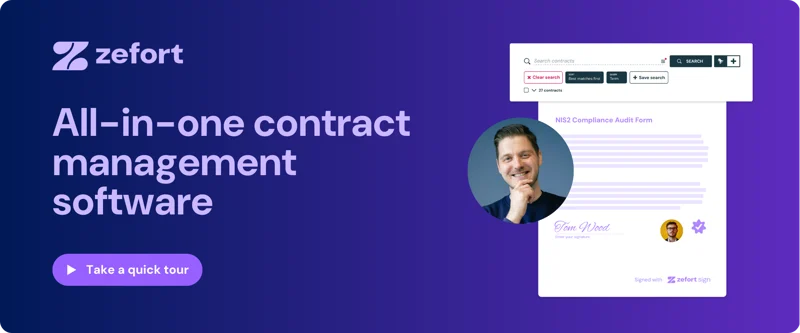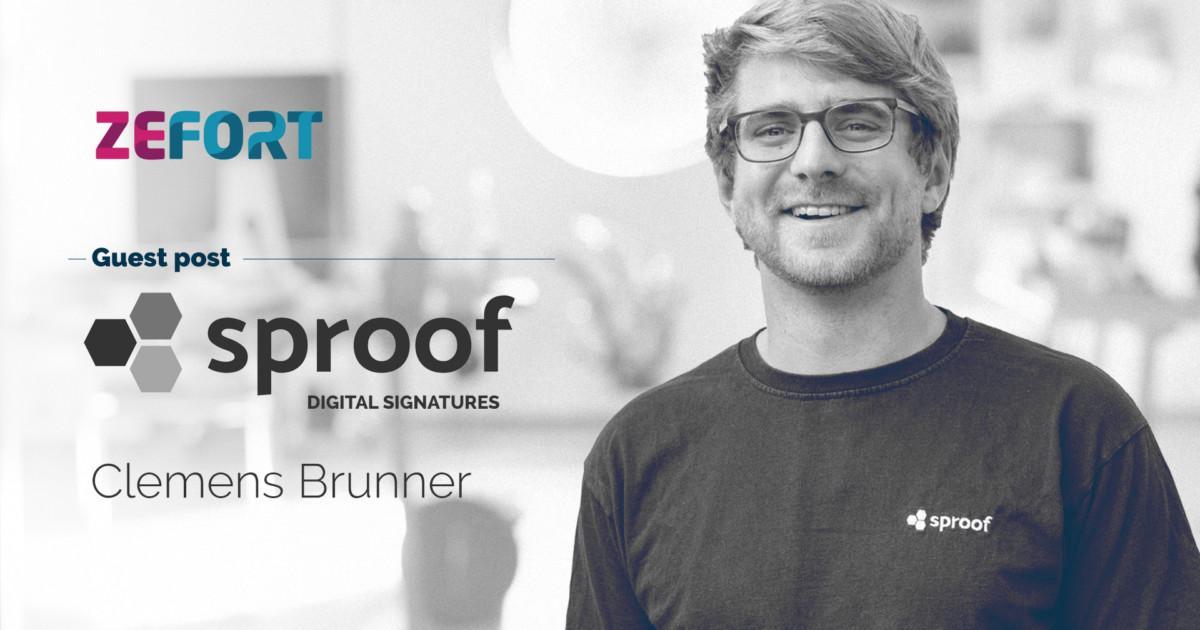Zefort vs other CLM solutions for procurement teams
Choosing the right contract lifecycle management (CLM) platform is one of the most impactful technology decisions a procurement team can make. The right system saves hours of manual work, reduces compliance risk and gives you a clear view of every supplier relationship. The wrong one becomes another silo.
Zefort is often compared with platforms such as Icertis, Gatekeeper, DocuSign CLM, ContractWorks and Juro. Each serves slightly different priorities. Here’s how they align with the real challenges procurement teams face in 2026.
Procurement-first CLM vs enterprise CLM
Many CLM tools were originally designed for legal or enterprise IT teams. They excel in contract authoring, templating and integrations, but not all of them fit procurement’s everyday reality – renewals, supplier compliance, and document accessibility.
Zefort takes the opposite approach.
It focuses on the visibility and control procurement leaders need, offering a single searchable repository, automated reminders, supplier data forms and a clean user experience that doesn’t require long onboarding.
If your goal is transparency, audit readiness and predictable renewals rather than deep workflow programming, Zefort’s design philosophy fits naturally.
1. Visibility and simplicity
Procurement teams often struggle with scattered documents, different storage systems and unclear ownership.
Zefort centralizes all supplier contracts into one secure, searchable environment. The layout is intentionally simple, so users in legal, finance and operations can find what they need in seconds.
Platforms like Icertis or DocuSign CLM also offer comprehensive visibility, but they tend to require larger implementation projects and IT involvement. Gatekeeper, by contrast, includes strong vendor management functions but can feel heavier for teams focused mainly on contract governance.
Zefort’s strength lies in balance – enterprise-grade security and structure without enterprise-level complexity.
2. Renewal control and automation
Few things frustrate procurement leaders more than missed renewals or unnoticed terminations. Zefort automates reminders for renewals, expirations and other lifecycle milestones, helping teams stay in control without relying on manual spreadsheets. Gatekeeper and Icertis also support renewal tracking, but Zefort’s reminder engine is ready out of the box – no custom workflow setup needed.
For smaller teams using tools like ContractWorks or Juro, renewal tracking typically remains a manual process or requires external calendar integration.
3. Supplier compliance and audit readiness
This is where Zefort clearly separates itself. With Zefort Forms, procurement teams can send secure digital questionnaires to suppliers, collect compliance statements, ESG data or certifications, and automatically store all responses with the related contract.
During an audit, this means supplier information and contracts are already connected – no more email searches or missing attachments.
Most other CLM systems handle supplier data externally or through separate onboarding modules. Zefort’s approach keeps everything in one place, simplifying compliance with frameworks like ISO 27001 or NIS2.
4. AI for structure and insight
Zefort’s AI features focus on practical outcomes. Instead of futuristic promises, they handle everyday tasks: identifying supplier names, renewal dates, contract owners and obligations.
This information is converted into metadata, making it easy to filter, report and analyze.
DocuSign CLM and Icertis both include AI-driven capabilities, but they are typically tuned for enterprise-scale implementations with heavier configuration.
Zefort brings the same core advantage – structured data and visibility – but in a format that works for procurement teams without technical dependency.
5. Security and compliance
Every procurement system must prove it can protect sensitive supplier data.
Zefort operates within ISO 27001-certified infrastructure and follows EU data handling standards, including NIS2 readiness.
Audit trails record every user action, ensuring full traceability.
Enterprise systems like Icertis or DocuSign CLM also meet strong security benchmarks, but Zefort’s architecture is designed for organizations that need compliance-level assurance without the overhead of a global IT project.
6. Ease of adoption and usability
A CLM system only works if people actually use it.
Zefort’s user experience consistently earns praise for being clear, fast and intuitive – procurement and legal teams can adopt it with minimal training.
This contrasts with larger platforms that often require months of configuration before rollout.
Procurement teams that value speed, usability and straightforward implementation find Zefort a natural fit.
Why procurement teams choose Zefort
- A secure, centralized contract hub designed for visibility
- Automated reminders that eliminate missed renewals
- Supplier compliance data collected with digital forms
- Practical AI features for structured, reportable contract information
- ISO 27001 and NIS2-level compliance without complexity
Zefort turns contract management from a static archive into a living system that supports procurement decisions every day.
Summary: choosing the right CLM for procurement
| Priority | Best fit |
| Quick setup and ease of use | Zefort, ContractWorks |
| Deep ERP or enterprise integration | Icertis, DocuSign CLM |
| Supplier onboarding and vendor risk management | Gatekeeper |
| Collaborative authoring | Juro |
| Audit readiness and EU compliance | Zefort |
| Balanced automation and simplicity | Zefort |
Let’s talk about your procurement needs
Every procurement organization has different priorities – from renewal control and audit readiness to AI visibility and supplier compliance. Zefort’s team helps you evaluate what matters most and shows exactly how those needs translate into your contract workflows.
Talk to our experts to see how Zefort compares to your current system and what a transition could look like for your team.
Book a 30-minute discussion with Zefort or click below to take a self-guided tour of the solution.





